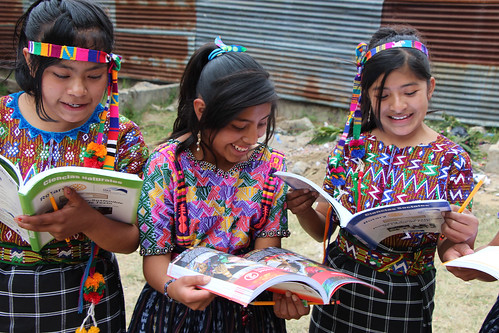
We’ve done a lot together in 20 years, CoEd supporters! Lately, as you know, we’ve been pretty jazzed about our sixfold expansion of the Scholarship & Youth Development Program. We’re also re-engineering and expanding CORP, preparing for the grand opening of our new Education Center, and working on a stupendous Early Childhood Development collaboration.
With the excitement of all of these new projects (not to mention the increasingly important role of technology like e-readers and tablets across the globe), it can be natural to wonder: Are textbooks still relevant?
Well, according to the Global Education Monitoring (GEM) Report released by the United Nations Educational, Scientific, and Cultural Organization (UNESCO) in January, YES.
This report, which is prepared using research gathered by educational experts and institutions from around the world, is a resounding endorsement for the importance of textbooks in the classroom. It contains such gems (pun fully intended) as this one:
“Textbooks are especially relevant to improving learning outcomes in low income countries with large class sizes, a high proportion of unqualified teachers and a shortage of instructional time.” (Wait, is this sounding like Guatemala to you?) “Next to an engaged and prepared teacher, well-designed textbooks in sufficient quantities are the most effective way to improve instruction and learning.”
BAM! Put that in your back pocket and sit on it. (We sure did.) This means that our Textbook Program, which provides textbooks to students using an affordable, sustainable model AND trains teachers to use the textbooks well, is probably “the most effective way to improve instruction and learning” in Guatemala. We knew we were doing something right.
The GEM report goes on to explain that across the world, textbooks yield a high return on investment when the cost of inputs is measured against increases in student achievement.
And it’s not just an international cadre of professional researchers who assert the importance of textbooks. 98% of our Textbook Program teachers say that their students have better analysis and critical thinking skills than they did before receiving textbooks. In addition, check out this thank you letter that arrived on our desk the other day:

This thank you letter may be addressed to us, but it really belongs to you.
In case you don’t speak Spanish, that’s a letter from one of our Textbook Program students at CEI middle school in Chimaltenango. He listed 20 things related to communication and language that the textbooks have helped him to learn. What are they, you ask?
- Reading comprehension
- Reading
- Writing
- Crafting sentences
- Verbs
- Adjectives
- Vowels
- Letter usage
- Verbal and non-verbal cues
- Written and oral signs
- Interviews
- Dialogue
- Accents
- Signs and symbols
- Periods and commas
- Pronouns
- Nouns
- Communication
- Adjectives
- Other punctuation marks
Okay, so maybe he accidentally listed adjectives twice, but did you notice that he’s learning about SEMIOTICS (the study of signs and symbols)? That blew our hair back a little bit. Jeez these kids are smart.
And guess what? It’s all thanks to you.


